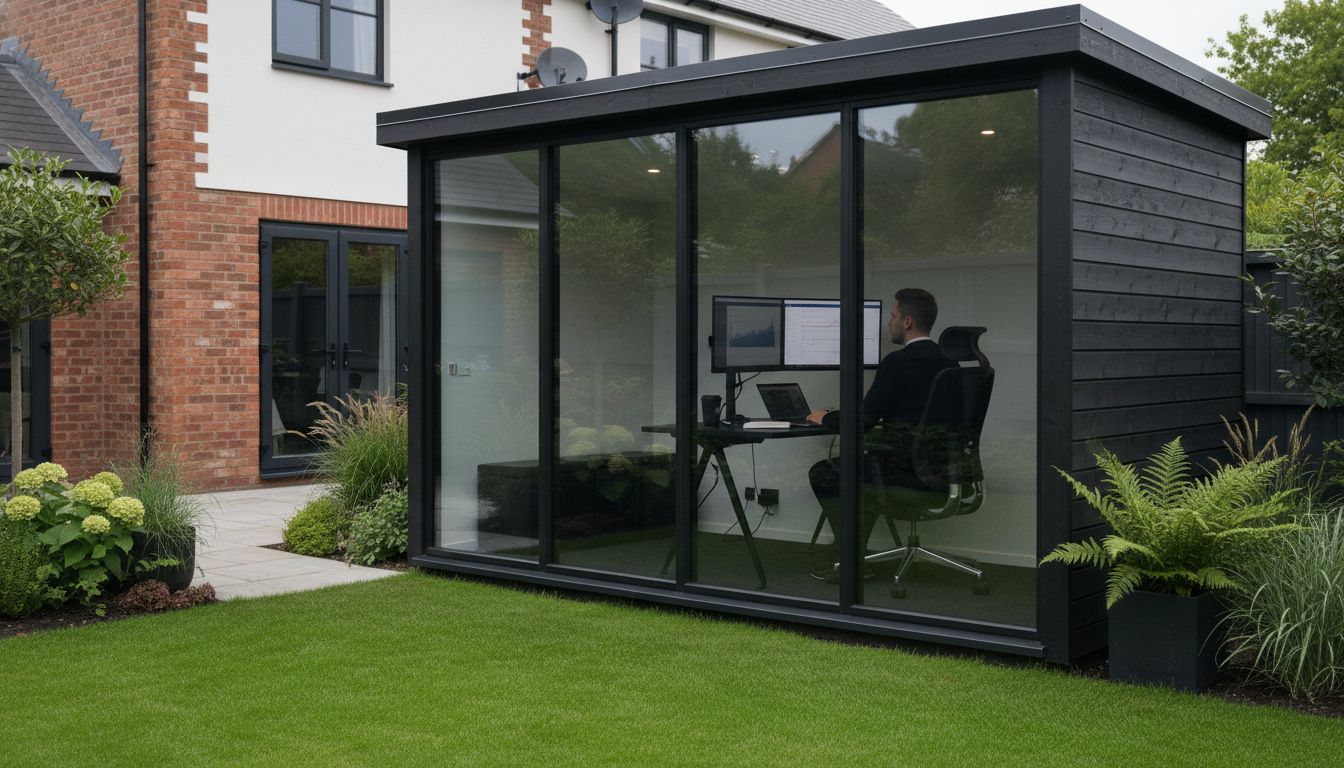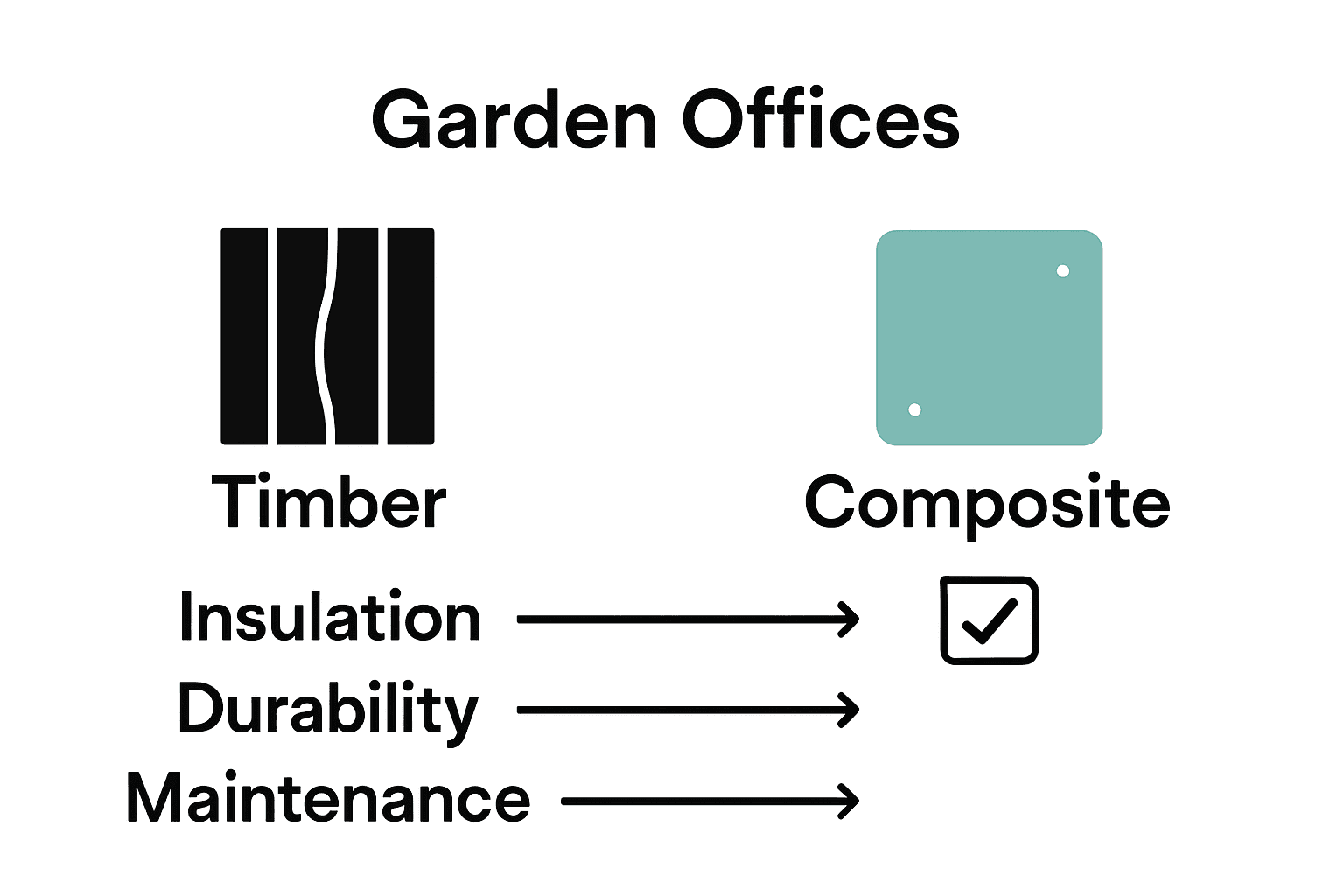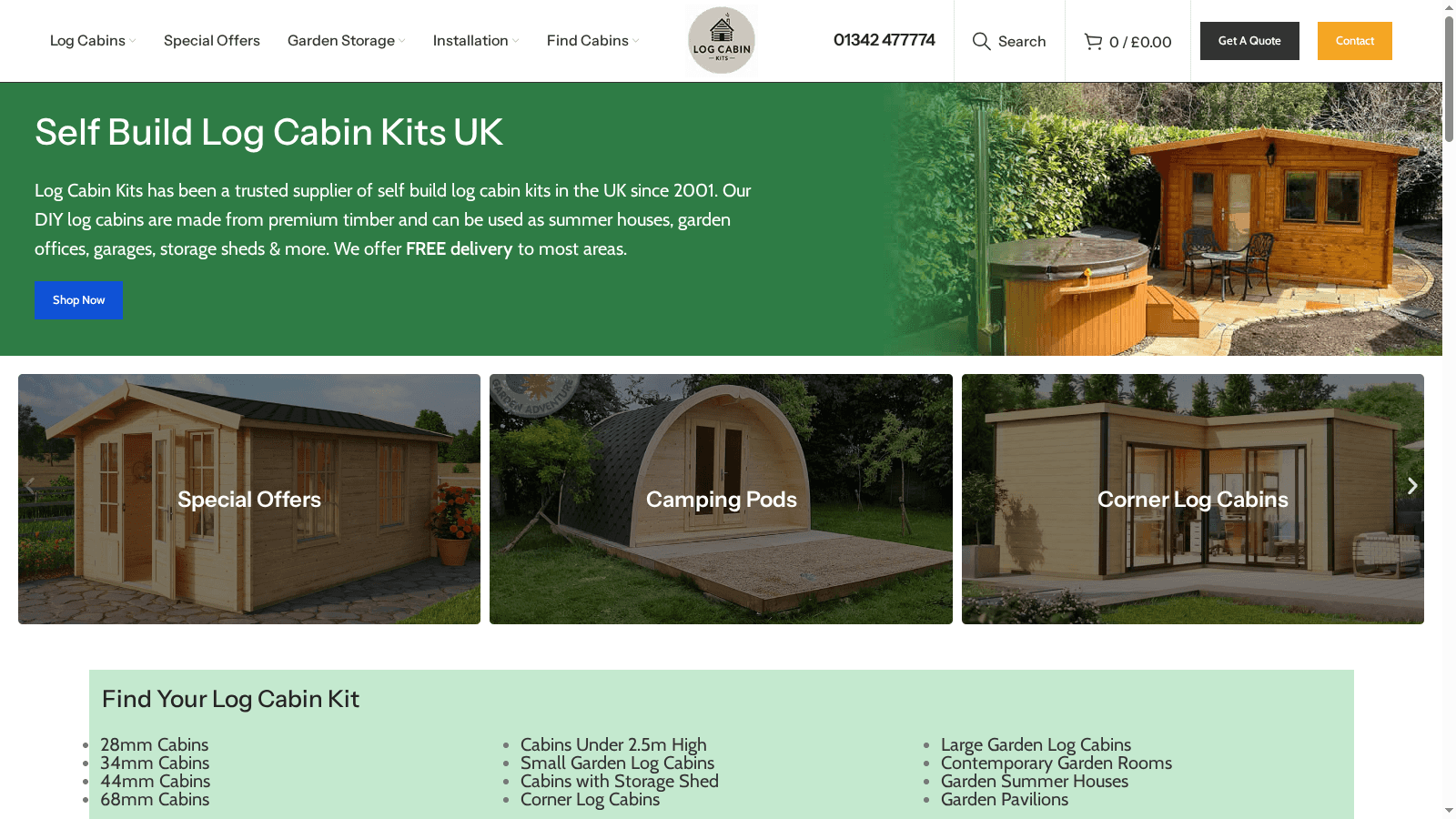Blog
Call Now 01342 477774
How to Choose the Right Garden Office for UK Homes

Over one million people in the UK now work from garden offices, a number that keeps rising as remote work becomes more common. For many, creating a functional and comfortable garden office means navigating unfamiliar choices, from space planning to building regulations. Whether you need a quiet retreat for focus or a custom space designed for online meetings, understanding each step makes the process smoother and helps you get the most from your investment.
Table of Contents
- Step 1: Assess Your Workspace And Usage Needs
- Step 2: Check UK Planning And Building Regulations
- Step 3: Compare Materials And Insulation Options
- Step 4: Select Bespoke Features And Finishes
- Step 5: Verify Installation, Quality, And Compliance
Quick Summary
| Key Point | Explanation |
|---|---|
| 1. Assess workspace requirements first | Evaluate your professional needs and space limitations for an ideal garden office design. |
| 2. Understand UK planning regulations | Familiarize yourself with legal requirements to avoid penalties during and after construction. |
| 3. Choose quality materials and insulation | Select materials that enhance thermal performance and structural integrity, ensuring long-term comfort. |
| 4. Customize features for productivity | Incorporate bespoke elements that enhance comfort and workflow to create a personal workspace. |
| 5. Verify installation for compliance | Thoroughly check construction quality and adherence to regulations to avoid future issues. |
Step 1: Assess your workspace and usage needs
Creating the perfect garden office starts with a thorough understanding of your professional requirements and spatial constraints. According to Self Build, evaluating your specific workspace needs is crucial for determining the right size and design for your garden office.
Begin by taking a detailed inventory of your work essentials. Consider the equipment you use daily – do you need space for multiple monitors, a large desk, filing cabinets, or specialized technology? Some professionals require dedicated meeting areas, while others need compact solo workstations. As Home Building highlights, garden offices provide an excellent solution for those lacking indoor workspace.
When mapping out your requirements, think beyond current needs and plan for potential future growth. Will your business expand? Might you need additional storage or a flexible area that can serve multiple purposes? Measure your existing workspace and translate those dimensions into your garden office design. Pro tip: Add 10-15% extra space to your initial measurements to ensure comfortable movement and potential equipment upgrades.

The next step involves selecting a garden office configuration that matches your professional workflow and personal style.
Step 2: Check UK planning and building regulations
Now that you have assessed your workspace needs, it is crucial to understand the legal requirements for garden offices in the UK. Before you start construction, you must navigate the complex landscape of planning permissions and building regulations. Navigating planning requirements can seem daunting, but with the right information, you can proceed confidently.
Most garden offices fall under permitted development rights, which means you might not need full planning permission. However, several key conditions must be met. Your garden office must typically be single story, with a maximum height of 2.5 metres, and occupy less than 50% of your garden area. You cannot use it as a permanent residence, and it must be located behind the principal elevation of your home. The structure should also be at least 2 metres from any property boundary.
Warning: Failing to comply with these regulations can result in enforcement action from local authorities, potentially requiring you to remove or modify your garden office. Always check with your local planning department before beginning construction. Building regulations approval is a separate process that focuses on the technical standards of construction, ensuring your garden office meets safety and energy efficiency requirements.
With the legal groundwork understood, you are now ready to move forward with selecting the perfect garden office design.
Step 3: Compare materials and insulation options
Choosing the right materials and insulation for your garden office is critical to creating a comfortable, energy efficient workspace. According to Self Build, selecting appropriate construction materials directly impacts the thermal performance and long-term durability of your garden building.
When comparing materials, you will encounter several primary options. Timber remains the most popular choice for garden offices, offering natural insulation properties and aesthetic appeal. Home Building suggests considering log thickness as a key factor in thermal performance. Thicker logs provide better insulation and temperature regulation. Look for materials with at least 44mm thickness for year round usability. Additionally, consider composite materials that offer enhanced weather resistance and minimal maintenance requirements.
Warning: Do not compromise on insulation quality. Poor insulation can lead to significant heat loss, increased energy bills, and an uncomfortable working environment. Key insulation elements to prioritize include double glazed windows, solid roof construction, and comprehensive wall insulation. Consider materials with high R values and explore options like mineral wool, foam boards, or natural wool insulation that provide excellent thermal performance.
 Investing in quality insulation upfront will save you money and create a more comfortable workspace in the long term.
Investing in quality insulation upfront will save you money and create a more comfortable workspace in the long term.
With your materials and insulation strategy mapped out, you are now ready to explore specific design configurations that match your workspace requirements.
Step 4: Select bespoke features and finishes
Transforming your garden office from a basic structure to a personalized workspace requires careful consideration of bespoke features and finishes. According to Self Build, customizing your space allows you to create a unique environment that truly reflects your professional style and personal needs.
Start by identifying the interior features that will enhance your productivity and comfort. Home Building suggests exploring options like built-in storage solutions, adjustable lighting systems, and ergonomic workstations. Consider modular shelving that can adapt to your changing work requirements, electrical outlets positioned for optimal device connectivity, and wall treatments that inspire creativity. Think about acoustic panels for sound management, built-in cable management systems, and flexible furniture that can be reconfigured as your work demands evolve.
Warning: Do not underestimate the importance of aesthetic and functional harmony. Your bespoke features should not only look appealing but also support your workflow efficiently. Consider exterior finishes that complement your home’s existing architecture while providing weather resistance. Explore custom cabin design options that allow you to match colours, add specific windows, or incorporate unique architectural elements that make your garden office truly your own.
With your bespoke features selected, you are now ready to plan the final stages of your garden office project.
Step 5: Verify installation, quality, and compliance
The final stage of your garden office project involves meticulously checking every aspect of installation, quality, and regulatory compliance. This crucial step ensures that your investment meets both your expectations and official standards. Verifying building regulations approval will help confirm that your garden office meets all necessary technical and safety requirements.
Begin by conducting a comprehensive walkthrough of the installation. Check every detail carefully including structural integrity, weatherproofing, electrical connections, and insulation performance. Pay close attention to window and door seals, ensuring they are correctly fitted and provide proper thermal efficiency. Verify that all electrical work has been completed by a qualified professional and meets current UK safety regulations. Inspect the foundation and base to confirm it is level and stable, which is critical for long-term durability and structural performance.
Warning: Do not rush or overlook any aspect of the final verification process. Seemingly minor installation issues can lead to significant problems in the future. Request all relevant documentation from your installer, including compliance certificates, electrical safety reports, and any warranties. Take photographs documenting the installation quality as a personal record and potential reference for future maintenance. If you identify any concerns during your inspection, address them immediately with your installation team before making final payment.
With your garden office thoroughly verified, you are now ready to enjoy your new professional workspace.
Find Your Ideal Garden Office with Expert Guidance and Custom Solutions
Selecting the perfect garden office for your UK home can feel overwhelming, especially when considering planning rules, insulation needs and bespoke design features. You want a workspace that is comfortable, compliant and tailored exactly to your professional lifestyle. At logcabinkits.co.uk, we understand these challenges and offer bespoke garden buildings designed to meet your precise requirements. Our expertly crafted cabins combine quality materials, efficient insulation and customisable options to create your ideal garden office.

Explore our range of customisable garden offices and enjoy peace of mind with compliance insights right on our website. Don’t wait until next season to upgrade your workspace. Visit logcabinkits.co.uk today to transform your garden into a productive professional haven. Discover the difference bespoke craftsmanship can make to your home office experience.
Frequently Asked Questions
Begin by taking inventory of your daily work essentials, such as the equipment you use and space requirements. Measure your current workspace, adding 10-15% extra space for comfort and future growth.
Most garden offices may fall under permitted development rights, but you need to adhere to conditions like height and location restrictions. Always check with your local planning department before starting construction to ensure compliance and avoid potential enforcement actions.
Select materials that offer good thermal performance, with timber being a popular choice. Aim for logs with at least 44mm thickness for better insulation, and prioritize features like double-glazed windows and robust wall insulation to maximize energy efficiency.
Identify features that enhance your workspace, like built-in storage or adjustable lighting. Consider selecting exterior finishes that match your home and create a cohesive appearance while ensuring they are weather-resistant and functional.
Conduct a comprehensive walkthrough, checking structural integrity, insulation, and electrical connections. Document the installation with photos and address any concerns immediately with your installation team to ensure all work meets your expectations before finalizing payment.
Plan for future growth by considering multifunctional areas and adequate storage solutions. Design your space with adaptability in mind, allowing for changes in your work style or equipment as your needs evolve.
